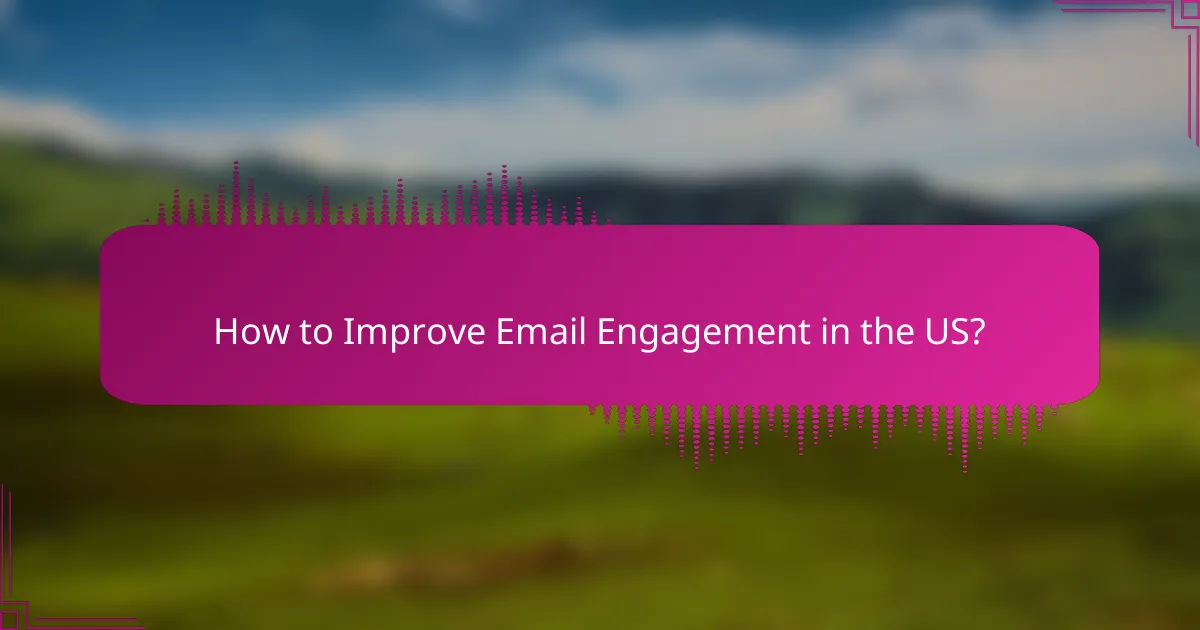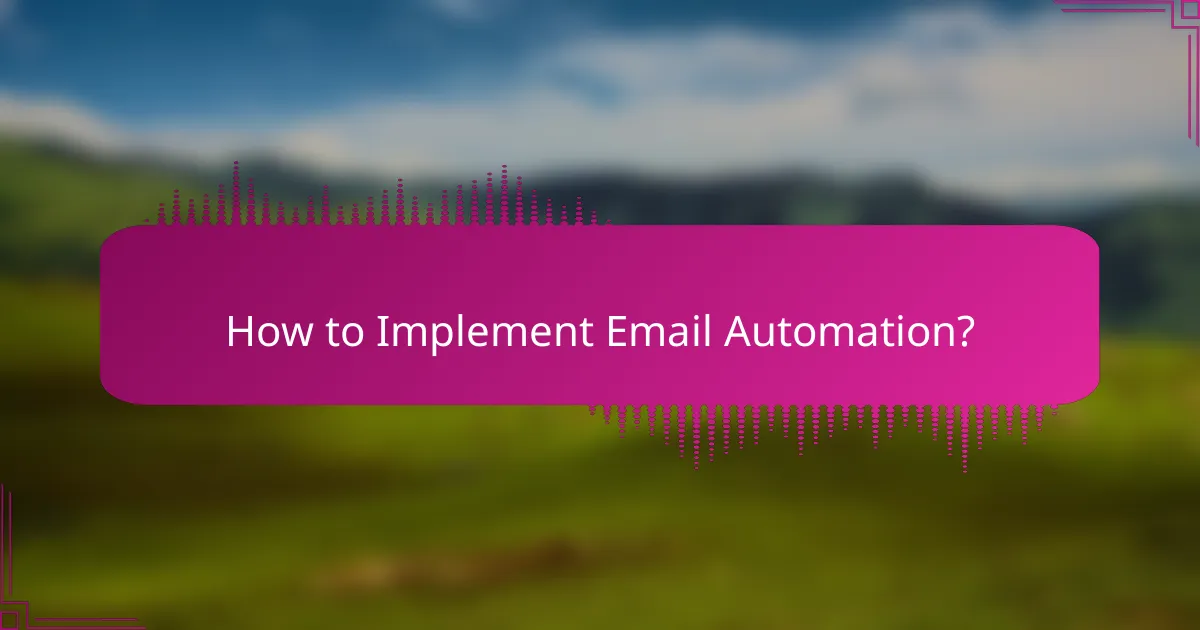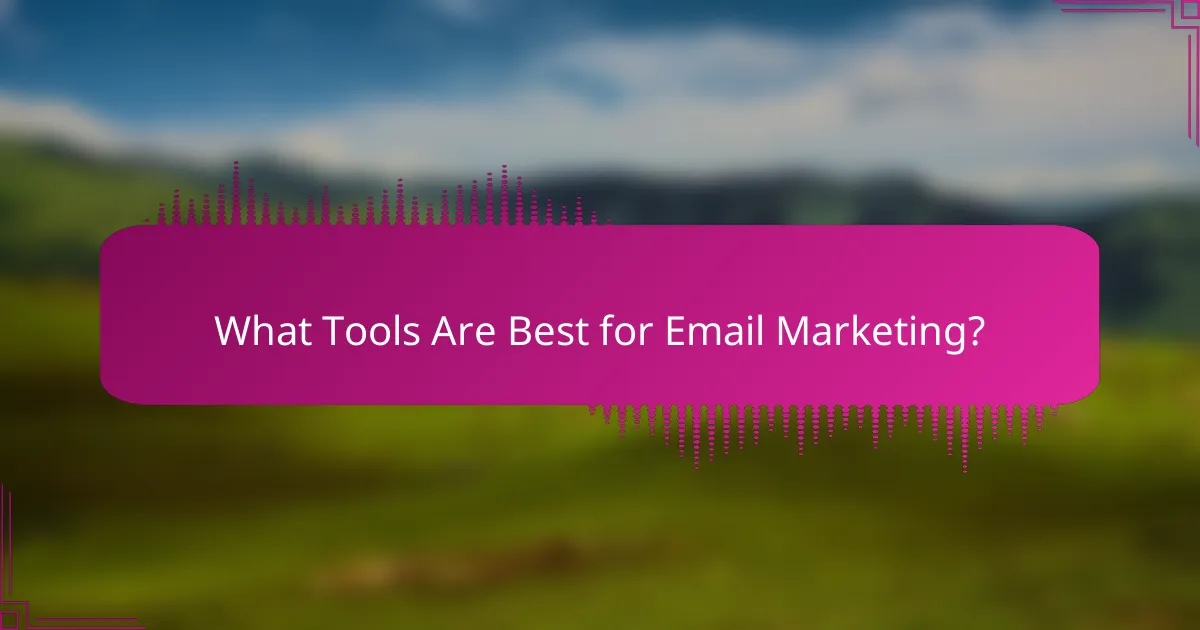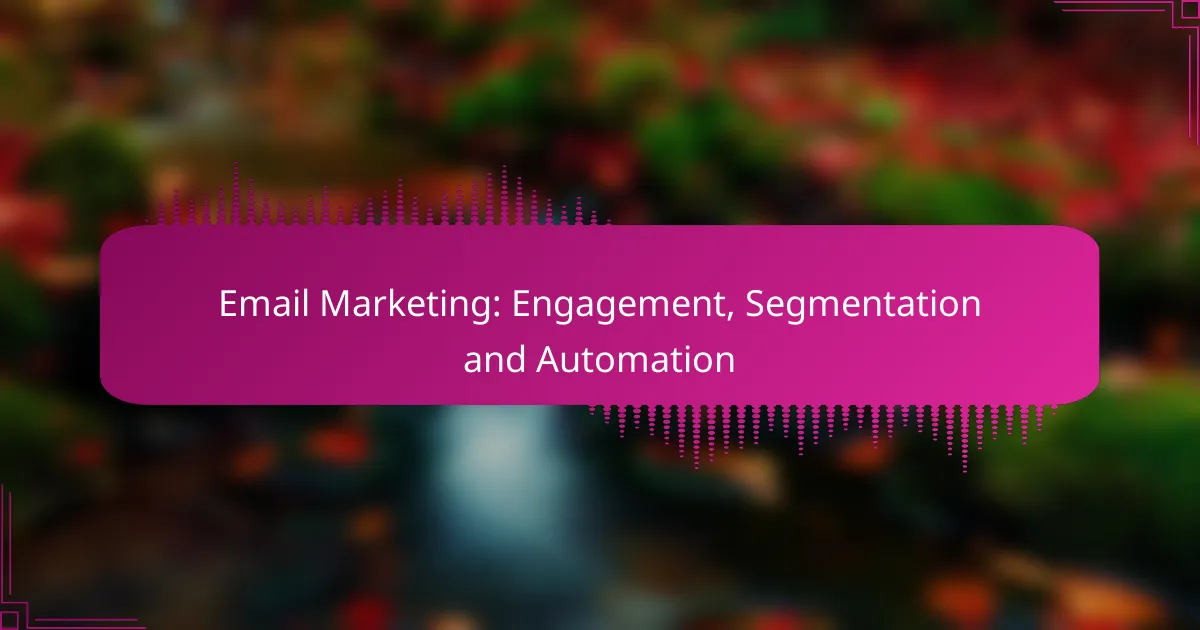Email marketing is a powerful tool for enhancing customer engagement, and it thrives on strategies like relevant content creation and effective subject line optimization. By segmenting your audience into distinct groups, you can deliver tailored messages that resonate with each recipient, boosting conversion rates. Additionally, leveraging automation allows for timely, targeted communications that respond to user behavior, further enhancing engagement and efficiency.

How to Improve Email Engagement in the US?
Improving email engagement in the US involves creating relevant content that resonates with your audience, optimizing subject lines, and incorporating interactive elements. By focusing on these strategies, you can significantly enhance open rates and overall interaction with your emails.
Personalized Content
Personalized content is tailored to the individual preferences and behaviors of your subscribers. This can include using their names, recommending products based on past purchases, or sending targeted messages based on their interests.
To implement personalization effectively, segment your audience based on demographics, purchase history, or engagement levels. Tools like dynamic content can help automate this process, ensuring each recipient receives a message that feels uniquely crafted for them.
Compelling Subject Lines
Compelling subject lines are crucial for capturing attention and encouraging opens. Aim for clarity and intrigue, using action-oriented language that prompts curiosity or urgency.
Consider A/B testing different subject lines to see what resonates best with your audience. Keep them concise, ideally under 50 characters, and avoid spammy words that could trigger filters.
Interactive Elements
Incorporating interactive elements, such as polls, quizzes, or clickable images, can significantly boost engagement rates. These features encourage recipients to participate actively rather than passively reading the content.
Make sure these elements are mobile-friendly, as many users access emails on their phones. Simple interactions can lead to higher click-through rates and foster a sense of community among your subscribers.
Segmentation Strategies
Segmentation strategies involve dividing your email list into smaller groups based on specific criteria, allowing for more targeted messaging. This can include factors like location, purchase behavior, or engagement history.
Effective segmentation can lead to improved open and click rates, as messages are more relevant to each group. Regularly analyze your segments and adjust them based on changing subscriber behaviors to maintain engagement over time.

What Are Effective Email Segmentation Techniques?
Effective email segmentation techniques involve categorizing your email list into distinct groups based on shared characteristics. This approach enhances engagement by delivering more relevant content to each segment, ultimately improving conversion rates.
Demographic Segmentation
Demographic segmentation divides your audience based on characteristics such as age, gender, income, education, and marital status. This method allows marketers to tailor messages that resonate with specific demographic groups, increasing the likelihood of engagement.
For example, a luxury brand may target high-income individuals with exclusive offers, while a student discount campaign would focus on younger audiences. Understanding these demographics helps in crafting personalized content that speaks directly to each group’s preferences.
Behavioral Segmentation
Behavioral segmentation categorizes users based on their interactions with your brand, such as purchase history, email engagement, and website activity. This technique enables marketers to identify patterns and tailor messages according to user behavior.
For instance, you might send a re-engagement email to users who haven’t opened your emails in a while or offer personalized product recommendations based on past purchases. This targeted approach can significantly enhance customer retention and conversion rates.
Geographic Segmentation
Geographic segmentation involves dividing your audience based on their location, such as country, region, or city. This technique is particularly useful for businesses that operate in multiple areas or have location-specific offerings.
For example, a restaurant chain may promote different menu items based on local tastes or seasonal availability. Additionally, understanding local regulations and cultural nuances can help in crafting messages that resonate better with specific geographic audiences.
Psychographic Segmentation
Psychographic segmentation focuses on the psychological aspects of your audience, including their values, interests, lifestyles, and personality traits. This approach allows for deeper connections by aligning your messaging with the audience’s motivations and preferences.
For instance, a brand promoting eco-friendly products can target environmentally conscious consumers by highlighting sustainability in their messaging. Understanding psychographics can lead to more meaningful engagement and foster brand loyalty among your audience.

How to Implement Email Automation?
Email automation involves setting up systems to send targeted messages based on user behavior or predefined triggers. This approach enhances engagement, saves time, and can significantly improve conversion rates.
Welcome Series Automation
Welcome series automation sends a sequence of emails to new subscribers, introducing them to your brand and offerings. Typically, this series includes a thank-you email, an overview of what to expect, and personalized recommendations based on their interests.
To implement a welcome series, start by defining the key messages you want to convey. Aim for a series of three to five emails spaced out over a week or two. Use engaging subject lines and clear calls to action to encourage interaction.
Abandoned Cart Emails
Abandoned cart emails are triggered when a customer adds items to their cart but leaves the site without completing the purchase. These emails serve as reminders and can include incentives like discounts to encourage the final sale.
To set up abandoned cart emails, ensure your e-commerce platform can track user behavior. Send the first reminder within a few hours of abandonment, followed by additional reminders over the next few days. Personalization, such as including the customer’s name and the items left in the cart, can increase effectiveness.
Re-engagement Campaigns
Re-engagement campaigns target inactive subscribers to rekindle their interest in your brand. These emails often include special offers, surveys, or updates on new products to entice recipients back.
When creating a re-engagement campaign, segment your audience based on inactivity duration, such as those who haven’t opened emails in the last three to six months. Use compelling subject lines and consider offering exclusive discounts or content to encourage re-engagement. Monitor the response rates to refine your approach over time.

What Tools Are Best for Email Marketing?
Effective email marketing relies on robust tools that enhance engagement, segmentation, and automation. The best tools streamline campaign management, provide analytics, and support targeted messaging to improve overall performance.
Mailchimp
Mailchimp is a popular choice for small to medium-sized businesses due to its user-friendly interface and comprehensive features. It offers customizable templates, automation workflows, and detailed analytics to track campaign performance.
Consider using Mailchimp if you need a straightforward platform that integrates well with e-commerce tools. The free tier allows for basic functionalities, making it ideal for startups, while paid plans offer advanced segmentation and A/B testing capabilities.
HubSpot
HubSpot is an all-in-one marketing platform that excels in email marketing, particularly for businesses focused on inbound marketing strategies. It provides advanced segmentation, personalization options, and robust analytics to optimize campaigns.
Utilize HubSpot if you are looking for a solution that integrates email marketing with CRM and content management. Its pricing can be higher, but the comprehensive features justify the investment for larger organizations or those with complex marketing needs.
ActiveCampaign
ActiveCampaign is known for its powerful automation capabilities, making it suitable for businesses that prioritize customer journeys and engagement. It combines email marketing with CRM features, allowing for sophisticated segmentation and targeted messaging.
Choose ActiveCampaign if you want to implement advanced automation workflows and track user behavior effectively. Its pricing is competitive, and it offers a range of plans that cater to different business sizes and needs, making it a versatile option for many marketers.

What Metrics Should You Track for Email Campaigns?
Tracking the right metrics for email campaigns is crucial for understanding engagement and optimizing performance. Key metrics include open rates, click-through rates, and conversion rates, each providing insights into different aspects of your campaign’s effectiveness.
Open Rates
Open rates measure the percentage of recipients who open your email, indicating the effectiveness of your subject line and sender reputation. A typical open rate ranges from 15% to 25%, but this can vary by industry.
To improve open rates, consider A/B testing subject lines and sending emails at optimal times based on your audience’s behavior. Avoid spammy language and ensure your emails are mobile-friendly to enhance visibility.
Click-Through Rates
Click-through rates (CTR) reflect the percentage of recipients who click on links within your email, showcasing the content’s relevance and engagement level. A good CTR usually falls between 2% and 5%, depending on the type of email and audience.
To boost CTR, use clear and compelling calls to action (CTAs) and segment your audience to tailor content to their interests. Regularly analyze which links are clicked most often to refine your approach.
Conversion Rates
Conversion rates indicate the percentage of recipients who take a desired action after clicking through, such as making a purchase or signing up for a webinar. A typical conversion rate can range from 1% to 3%, but this varies widely based on the offer and audience targeting.
To enhance conversion rates, ensure your landing pages are aligned with your email content and provide a seamless user experience. Utilize retargeting strategies for those who clicked but did not convert, and consider offering incentives to encourage action.

What Are the Best Practices for Email List Building?
Effective email list building is crucial for successful email marketing campaigns. Best practices include using lead magnets, maintaining list hygiene, and segmenting your audience for targeted messaging.
Lead Magnets
Lead magnets are incentives offered to potential subscribers in exchange for their email addresses. They can take various forms, such as eBooks, whitepapers, discount codes, or exclusive content. The key is to provide value that aligns with your audience’s interests.
When creating a lead magnet, consider what your target audience finds appealing. For example, if you run a fitness blog, a free workout plan or nutrition guide could attract subscribers. Ensure that your lead magnet is easily accessible and clearly communicated on your website or social media channels.
Common pitfalls include offering lead magnets that are too generic or not relevant to your audience. Focus on quality over quantity; a highly targeted lead magnet can yield better engagement rates than a broad, less appealing offer. Regularly evaluate the effectiveness of your lead magnets and adjust them based on subscriber feedback and engagement metrics.
